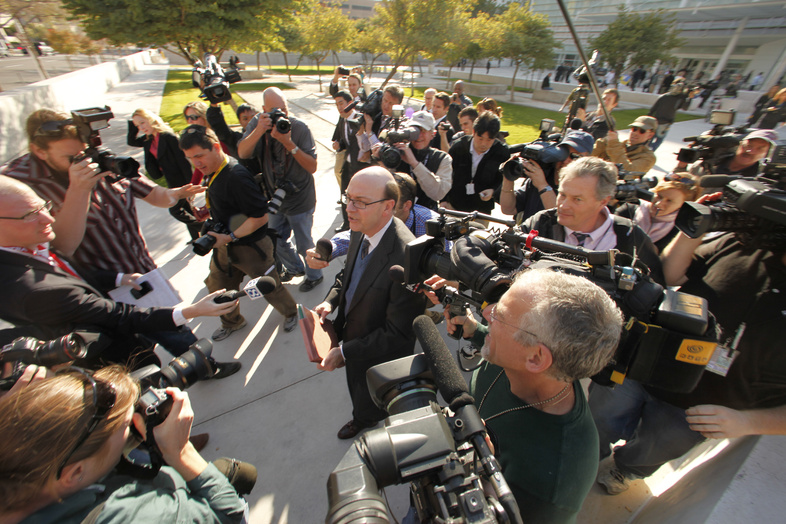When faced with a crime as horrible as last weekend’s mass killing in Arizona, it’s human nature to look for a villain as big as the crime.
Before accurate details emerged about the rampage, in which a clearly troubled young man opened fire on U.S. Rep. Gabrielle Giffords, gravely wounding her, killing six bystanders and injuring 13 others, attempts were being made to put this act into a bigger political context.
Talk radio, the tea party and un-civil political discourse were batted around as contributing factors in the case even before the media on the scene could consistently report whether the shooter had acted with an accomplice or if Giffords was alive or dead.
Former vice presidential candidate Sarah Palin came under particularly exaggerated focus for a graphic posted on her website before the election in which several contested House districts, including Giffords’, were identified on a map with symbols looking like the cross hairs view through a telescopic sight.
Critics acted as if they had conveniently forgotten that “targeting” is a common metaphor used everywhere from business to the sports world, and doesn’t connote a real threat of violence in a political discussion any more than it would to say a candidate “knocked out” an opponent.
It’s one thing to decry a harsh political environment in which overheated rhetoric makes it hard for people to find common ground and reach compromise. It’s another to accuse someone of accessory to murder, and before you do that, you ought to have a few facts.
What is emerging is a picture of the accused shooter, Jared Loughner, as a disturbed loner who has been setting off alarm bells from people who have encountered him for many months.
Attempts have been made to tie him to various political movements, including the one behind the white supremacist American Renaissance magazine, whose doctrines have some echoes in Loughner’s diatribes.
But even a cursory review of the rambling Internet videos he made show that the structure of his thinking is so disrupted, the content of his speech — from his preference for gold-backed currency to his belief that the government is controlling our minds through bad grammar — is irrelevant.
What matters more than his political influences is that people who met him in the months leading up to this attack recognized that there was something seriously wrong with him and feared that he was dangerous.
Lynda Sorenson, who attended a math class with Loughner at a Tucson community college last June, reported to friends that there was a “disturbed” student who disrupted the class and refused to leave when the teacher kicked him out.
She wrote about the incident in an e-mail that was published by The Washington Post, saying, “Hopefully, he will be out of class very soon and not come back with an automatic weapon.”
Loughner had multiple encounters with campus police and agreed to withdraw from school after meeting with administrators. He could only return after going through a voluntary mental health screening which concluded that he was not a danger to himself or others. Unfortunately, that’s where it ended.
Despite the fact that multiple warning signs were noticed, it was left up to an obviously disturbed person to decide to seek help. Too bad the events that led to his expulsion from college could not have led to a more aggressive intervention, even one that took him into custody until he could be determined to be safe.
This is not a call to punish people with mental illness, who are much more likely to be the victims of crimes than perpetrators. But it is a reminder that some mentally ill people who need help won’t get it for themselves and may need authorites to step in.
It may be good politics to try to pin this heinous act on an organized political group, but we may find that, this time, politics was beside the point.
Send questions/comments to the editors.



Comments are no longer available on this story